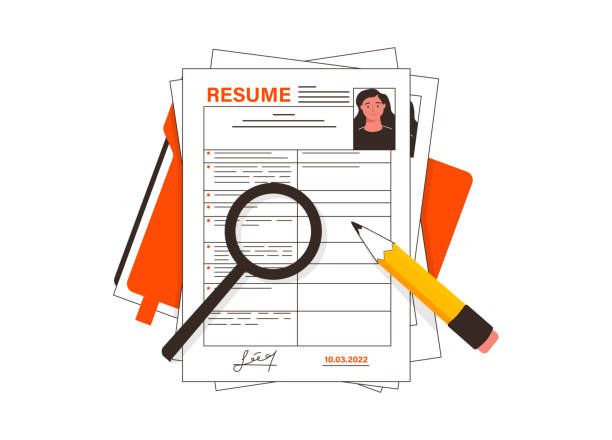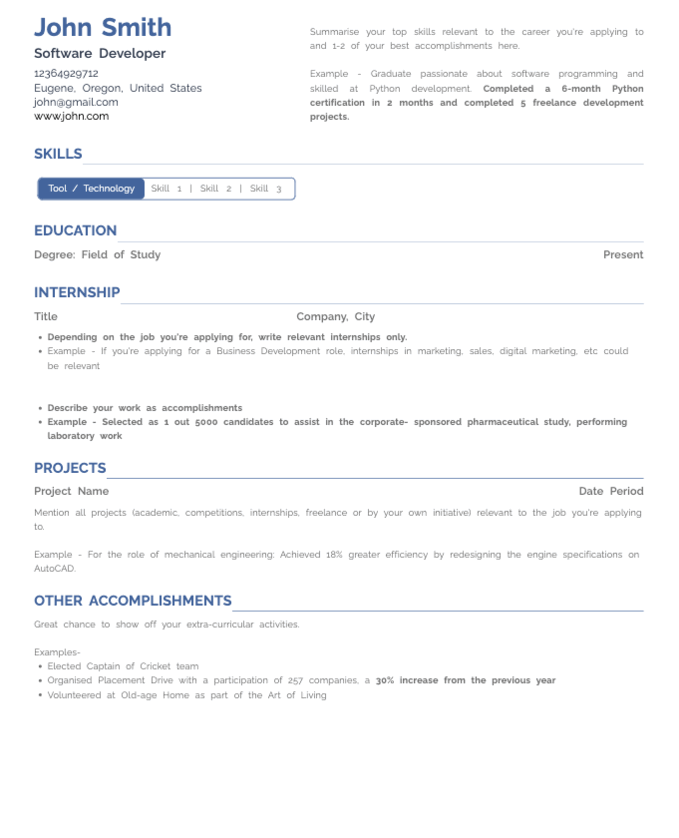20+ Best Skills to Put on a Resume in 2023
8 min read

In today's competitive job market, having a well-crafted resume that showcases your skills is crucial to stand out to potential employers.
The skills you include can make a significant difference in whether you land that dream job or not.
To dodge this issue, one of the best ways is to use HyreSnap Online Resume Builder. It will give your skill suggestions and help you list your skills professionally in the resume for better results.
Additionally, here you will get answers to all the fundamental queries related to the skill listing in resume that includes:
- What is the importance of skills in a resume?
- How to list skills in a resume?
- Where else we can add skills apart from the key skills section?
- What are the best skills to put on a resume?
- What are the things to remember while writing skills in a resume?
Let’s move on and check the guidelines on all the Whats and Hows of skill writing in a resume:
How Important Are Skills in a Resume?
Skills are incredibly important in a resume, and they often play a pivotal role in whether your resume makes it through the initial screening process and into the hands of hiring managers. Here's why skills are crucial on a resume:
- First Impression: Skills are among the first things employers look for when reviewing resumes. They provide an immediate snapshot of your qualifications and whether you have the necessary competencies for the job.
- Relevance: Skills should be tailored to the specific job you're applying for. Highlighting relevant skills shows that you've taken the time to understand the job requirements and that you possess the abilities needed to excel in the role.
- Keyword Matching: Many employers use applicant tracking systems (ATS) to screen resumes. These systems scan for keywords to determine if a resume should move forward in the selection process. Including relevant skills increases your chances of passing this initial screening.
- Demonstrated Value: Your skills should not merely be listed; they should be supported by evidence of how you've used them in previous roles. Accomplishments and experiences that showcase your skills demonstrate your ability to apply them effectively.
- Competitive Edge: In today's competitive job market, having a strong skill set can set you apart from other candidates. It's not just about having skills; it's about having the right skills and being able to demonstrate their value.
- Adaptability: Skills also demonstrate your adaptability and ability to learn. Employers often seek candidates who can quickly acquire new skills as job requirements evolve.
- Core vs. Soft Skills: Resumes should ideally include a mix of core technical or job-specific skills and soft skills like communication, teamwork, problem-solving, and adaptability. Soft skills are often equally important as technical skills because they relate to how you work with others and navigate challenges.
- Completeness: A resume that lacks a skills section might appear incomplete or lacking in essential information. Including a skills section provides a more comprehensive view of your qualifications.
Listing skills in a resume effectively involves organizing them in a clear, structured manner that aligns with the job you're applying for. Here are some steps on how to list skills in a resume:
Before listing skills, thoroughly review the job description to identify the specific skills and qualifications required for the position. Tailor your list of skills to match the job's demands.
Start your resume with a dedicated "Skills" section. This can be placed either at the beginning of your resume or after your professional summary/objective.
Incorporate a mix of both hard (technical or job-specific) skills and soft skills. Hard skills include specific technical proficiencies, while soft skills encompass interpersonal, communication, and problem-solving abilities.
Order your skills based on relevance to the job you're applying for. Place the most crucial skills for the position at the beginning of the list.
Incorporate keywords from the job description into your skills section. This not only helps your resume pass through applicant tracking systems (ATS) but also shows that you're a strong match for the role.
Avoid vague terms like "good communication skills." Instead, be specific and provide details. For example, "Effective verbal and written communication in cross-functional teams."
Whenever applicable, quantify your skills with achievements or statistics. For instance, "Increased website traffic by 40% through SEO optimization."
If you have relevant certifications, include them in your skills section. This adds credibility to your skillset.
Organize your skills into logical groups. For instance, you might have a section for programming languages, another for project management tools, and another for soft skills.
If you're changing careers or industries, emphasize transferable skills that are relevant to the new role. Highlight how these skills can benefit the prospective employer.
While you want to provide a comprehensive view of your skills, avoid overwhelming the reader with a long list. Aim for a balance between relevance and brevity.
Incorporate your skills within your work experience section as well. Use your job descriptions to showcase how you applied these skills in previous roles.
Periodically review and update your skills section to ensure it remains current and aligned with your career goals.
Always proofread your resume, including the skills section, for accuracy and consistency.
Here's an example of how your skills section might look:
Skills
- Technical Skills: Python, SQL, Data Analysis, Machine Learning
- Project Management: Agile, Scrum, JIRA
- Web Development: HTML, CSS, JavaScript, React
- Communication: Effective verbal and written communication
- Teamwork: Collaborative approach in cross-functional teams
- Problem-Solving: Analytical thinking and creative problem-solving
Remember that your resume is a marketing tool, so presenting your skills effectively is crucial. Customizing your skills section for each job application can significantly improve your chances of getting noticed by employers.
In addition to the dedicated "Skills" or "Key Skills" section on your resume, you can strategically incorporate your skills in other sections to provide a more comprehensive view of your qualifications. Here are some places where you can showcase your skills:
- Professional Summary or Objective: Mention a few key skills relevant to the job in your professional summary or objective statement. This can give hiring managers an immediate sense of your qualifications.
- Work Experience Section: Use your work experience descriptions to demonstrate how you applied your skills in previous roles. Highlight specific achievements and responsibilities that required the skills relevant to the job you're applying for.
- Education Section: Mention any relevant skills you gained through your education, especially if you completed coursework or projects directly related to the job.
- Certifications and Training: If you have certifications or have completed training programs that are pertinent to the job, include them in a dedicated section or mention them under your education or skills section.
- Projects or Portfolio: If you have a portfolio or have worked on significant projects, you can showcase your skills within this section. Describe the projects, your role, and the skills you utilized.
- Volunteer Experience: If you've volunteered for organizations or projects where you've developed skills relevant to the job, briefly mention these in your resume.
- Languages: If you are multilingual and language proficiency is relevant to the position, include a "Languages" section to highlight your language skills.
- Professional Associations: If you are a member of professional associations or industry-specific groups, mention any relevant skills or competencies you've gained through your association with these organizations.
- Hobbies and Interests (Optional): In some cases, your hobbies or interests can provide insights into skills or qualities that might be valuable to an employer. For example, if you're an avid photographer applying for a marketing role, your photography hobby might indicate creativity and an eye for visuals.
- Cover Letter: While not part of your resume, your cover letter is an opportunity to expand on your skills and experiences. You can mention specific skills and how they relate to the job in your cover letter.
When adding skills to these sections, ensure they are relevant to the job you're applying for and that you provide specific examples or context to demonstrate how you've applied these skills in practice.
Choosing the best skills to put on your resume depends on your specific background, the job you're applying for, and the industry you're in. Here's a list of 20+ skills that are often sought after by employers, categorized into technical (hard) skills and soft skills:
Technical (Hard) Skills
- Programming Languages: Such as Python, Java, C++, or JavaScript, depending on your field.
- Data Analysis: Skills in data analytics tools like SQL, Excel, or data visualization tools like Tableau.
- Web Development: Proficiency in HTML, CSS, JavaScript, and web frameworks like React or Angular.
- Digital Marketing: Including SEO, SEM, social media advertising, and email marketing.
- Graphic Design: Knowledge of Adobe Creative Suite (Photoshop, Illustrator, InDesign) or other graphic design software.
- Project Management Tools: Familiarity with tools like Microsoft Project, Asana, Trello, or JIRA.
- Database Management: Skills in database systems like MySQL, PostgreSQL, or NoSQL databases.
- Cloud Computing: Experience with cloud platforms like AWS, Azure, or Google Cloud.
- Machine Learning and AI: Proficiency in machine learning libraries such as TensorFlow or scikit-learn.
- Cybersecurity: Knowledge of security protocols, firewalls, and security tools.
- DevOps: Familiarity with tools like Docker, Kubernetes, Jenkins, and Git.
- Network Administration: Skills in configuring and managing network infrastructure.
Soft Skills
- Communication: Effective verbal and written communication skills, including active listening.
- Teamwork: The ability to collaborate and work effectively in a team environment.
- Problem-Solving: Analytical thinking and creative problem-solving abilities.
- Adaptability: The capacity to quickly adjust to new situations and learn new skills.
- Leadership: Skills in motivating, guiding, and managing teams or projects.
- Time Management: The ability to prioritize tasks and meet deadlines.
- Critical Thinking: The capability to analyze information and make informed decisions.
- Attention to Detail: Meticulousness in ensuring accuracy and quality in work.
- Customer Service: Skills in dealing with customers, understanding their needs, and resolving issues.
- Negotiation: The ability to negotiate effectively in business or interpersonal situations.
- Creativity: Innovative thinking and the ability to generate new ideas.
- Conflict Resolution: Skills in addressing and resolving conflicts within a team or organization.
- Emotional Intelligence: Awareness and management of one's own emotions and those of others.
- Networking: Building and maintaining professional relationships and connections.
- Cultural Sensitivity: The ability to work effectively with people from diverse backgrounds.
Remember that the skills you list should be relevant to the job you're applying for. It's also beneficial to provide specific examples of how you've used these skills in your work experience to demonstrate your proficiency.
Additionally, consider the job description and tailor your skills section to match the specific requirements of the position to increase your chances of being selected for an interview.
When adding skills to your resume, it's essential to present them effectively to showcase your qualifications and make a positive impression on potential employers. Here are some key things to remember while putting skills on your resume:
- Relevance to the Job: Tailor your skills to match the specific job you're applying for. Highlight skills that are directly related to the position's requirements.
- Prioritize Key Skills: Place the most important and relevant skills at the beginning of your skills section. These are the skills that align most closely with the job description.
- Use Keywords: Incorporate keywords from the job description into your skills section. Many employers use applicant tracking systems (ATS) that scan resumes for specific keywords.
- Balance Technical and Soft Skills: Include both technical (hard) skills and soft skills. Technical skills demonstrate your competence in specific tasks, while soft skills reflect your interpersonal and problem-solving abilities.
- Quantify When Possible: Whenever applicable, quantify your skills with achievements or statistics. For instance, "Increased website traffic by 40% through SEO optimization."
- Be Specific: Avoid vague or generic terms like "good communication skills." Instead, be specific and provide details. For example, "Effective verbal and written communication in cross-functional teams."
- Demonstrate Skills in Context: In your work experience section, showcase how you've applied your skills in previous roles. Use specific examples and accomplishments to support your skills.
- Include Certifications: If you have relevant certifications, mention them in your skills section or under a separate "Certifications" section.
- Keep It Concise: While you want to provide a comprehensive view of your skills, avoid overwhelming the reader with a long list. Aim for a balance between relevance and brevity.
- Proofread for Accuracy: Ensure that your skills section is free from errors in spelling and grammar. Inaccurate information can diminish your credibility.
- Use a Consistent Format: Maintain a consistent format for listing skills. You can use bullet points, columns, or a table format, but keep it uniform throughout the section.
- Be Honest: Only include skills that you genuinely possess and can confidently discuss during interviews. Exaggerating or listing skills you don't have can lead to problems during the hiring process.
- Update Regularly: Periodically review and update your skills section to ensure it remains current and aligned with your career goals.
- Customize for Each Application: Customize your skills section for each job application. Highlight skills that match the specific requirements of the position.
By following these guidelines, you can effectively present your skills on your resume, making it clear to employers that you possess the qualifications they are looking for in a candidate.
HyreSnap Career Assistance
You can follow these above given guidelines to write resume skills in 2023. To help you more on the resume-building part, we have also built the HyreSnap Online Resume Builder. It is powered with the Artificial Intelligence technology and is free for the first three trials.
Additional qualities and key offerings of this modern resume building platform can be seen below:
Key Takeaways
We have listed some skills above that you can add to your resume in 2023. Moreover, you can also follow the aforementioned guidelines to list your skills professionally in the resume. To revise everything mentioned above, consider reading these key takeaways:
- You can pick required skills from the Job Description to showcase relevancy
- Make separate sections to list your soft skills and technical skills
- Add your skills in other resume sections as well like summary, experience etc.
- Proofread with a focused mind after listing your resume skills to minimize errors
Moreover, our experts are always available to assist you in building your career. You can contact us at info@hyresnap.com for additional resume-building assistance without any second thought.

Try Now for Free!




